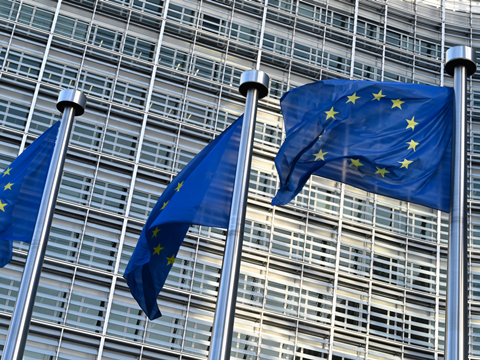
Among other measures, the European Commission aims to ban and phase out ‘problematic’ substances and implement a Polluter Pays Principle in Global Plastics Treaty negotiations at INC-5 – yet it emphasizes differences in national circumstances as it pursues a just transition.
Data from the United Nations Environment Programme (UNEP) in 2021 estimates that 400 million tonnes of plastic are produced annually. Only around 12% of these have been incinerated and 9% recycled, with the rest going to landfill or entering the environment; 109 million tonnes are said to have gathered in rivers and 30 million tonnes in the ocean.
The OECD’s Global Plastics Outlook from 2022 indicates that the amount of plastic leaking into the environment could double and reach 44 million tonnes per year. Similarly, greenhouse gas emissions related to the production and use of plastics could reach 4.3 gigatonnes of CO2e – over double its current figure.
While plastics are beneficial to the European economy and the everyday lives of consumers, the EU warns that this ‘exponential growth’ has ‘serious negative effects’ on human health and the environment. In response, it advocates for ‘turning off the tap’ – reducing the production of primary plastic polymers to manageable levels and improving circularity in the plastics industry.
In the EU’s view, a Global Plastics Treaty should implement bans and phase-outs on such ‘problematic’ products as single-use plastics and chemicals of concern. Criteria and rules should be introduced to guide countries towards circularity- and sustainability-minded product design.
Intentionally added microplastics should be banned, the statement continues; this is set to help prevent plastic pollution in the environment, including the ocean, and counteract the loss of biodiversity.
In uplifting the Polluter Pays Principle, the EU intends to place financial responsibility for plastic pollution on major producers via the Polluter Pays Principle. It recommends that existing financial arrangements and private sector contributions be used to implement a future agreement.
Additionally, it values Extended Producer Responsibility (EPR) schemes and the scaling-up of waste management restrictions as ‘key measures to succeed’.
Adopting a legally binding instrument instrument to end plastic pollution is described as a ‘key priority’ of the EU’s Circular Economy Action Plan under the European Green Deal.
“Plastics are choking our oceans, polluting the environment and harming people’s health and livelihoods,” said Maroš Šefčovič, executive vice-president for the European Green Deal. “If business as usual continues, plastic production will triple by 2060.
“We need coordinated global policies to change plastic production and consumption patterns in a way that delivers for people and the planet.
“We now have a chance to demonstrate how we can take action jointly to promote a more circular and sustainable economy for plastics. The EU is ready to engage with other parties and build bridges for agreeing a global treaty by the end of the year.”
However, the EU states that ‘upon entry into force, effective implementation should consider the different national circumstances and the need for a just transition’.
Alongside G20 partners, the EU emphasizes its commitment to bringing negotiations to a close and concluding the treaty by the end of 2024.
It also gestures towards its involvement with the High Ambition Coalition to End Plastic Pollution, in which 65 countries have committed to ‘aiming high in the negotiations to end plastic pollution by 2040’. WWF recently applauded the Coalition’s INC-5 Ministerial Statement and announced that it would hold the Coalition to its targets during treaty negotiations.
On the voluntary side, the Business Coalition for a Global Plastics Treaty has been advocating for a Global Plastics Treaty by publishing an open letter to Heads of State encouraging governments to tackle plastic pollution at a global level. The organization is calling for the instrument to cover ‘problematic’ and avoidable plastic products, chemicals of concern, plastic product design, sector-specific provisions, and more in the final round of negotiations.
If you liked this story, you might also enjoy:
The ultimate guide to the Packaging and Packaging Waste Regulation in 2024
How are the top brands progressing on packaging sustainability?
Sustainable Innovation Report 2024: Current trends and future priorities
Everything you need to know about global plastic sustainability regulation
















No comments yet